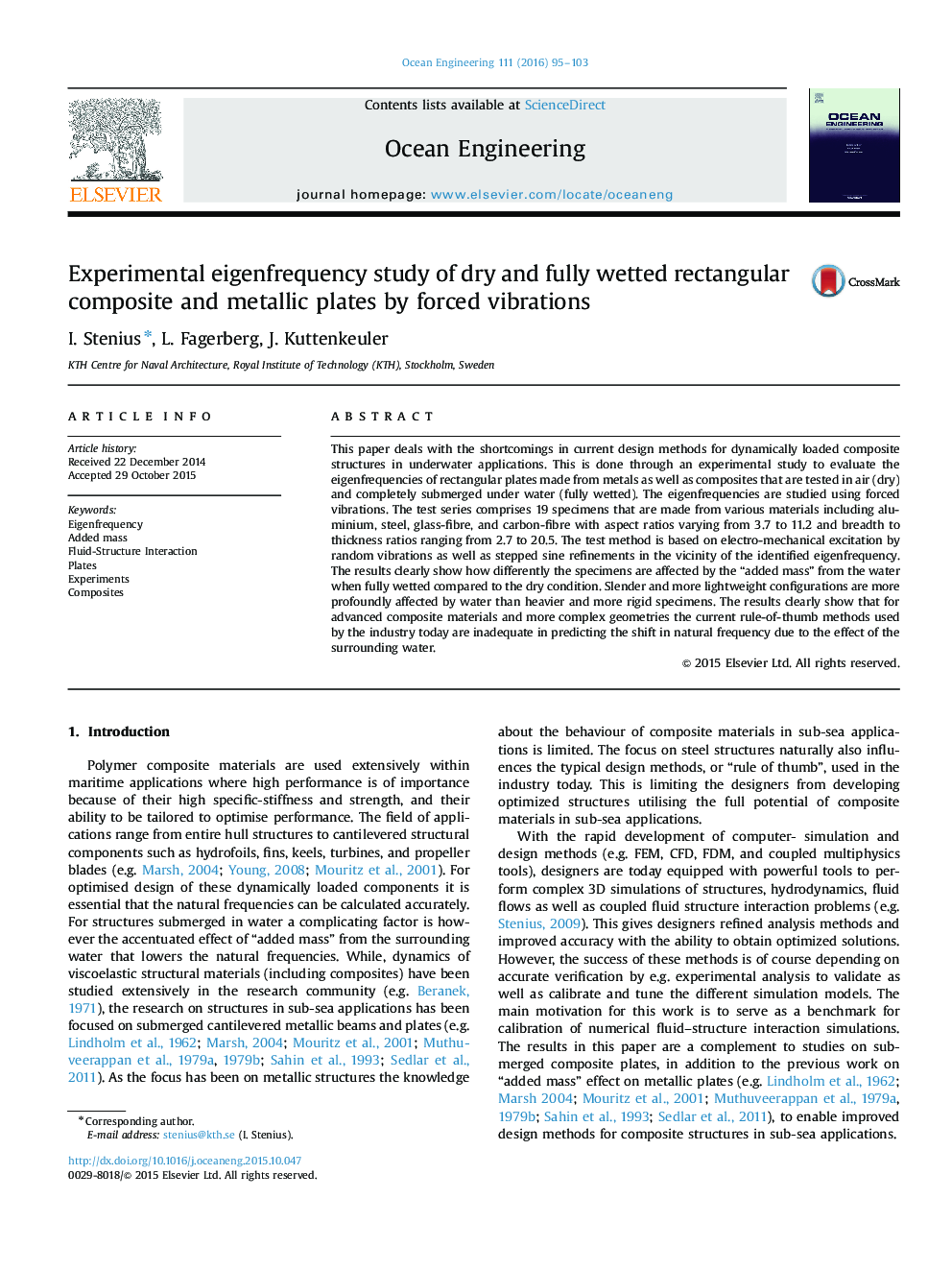| Article ID | Journal | Published Year | Pages | File Type |
|---|---|---|---|---|
| 8065012 | Ocean Engineering | 2016 | 9 Pages |
Abstract
This paper deals with the shortcomings in current design methods for dynamically loaded composite structures in underwater applications. This is done through an experimental study to evaluate the eigenfrequencies of rectangular plates made from metals as well as composites that are tested in air (dry) and completely submerged under water (fully wetted). The eigenfrequencies are studied using forced vibrations. The test series comprises 19 specimens that are made from various materials including aluminium, steel, glass-fibre, and carbon-fibre with aspect ratios varying from 3.7 to 11.2 and breadth to thickness ratios ranging from 2.7 to 20.5. The test method is based on electro-mechanical excitation by random vibrations as well as stepped sine refinements in the vicinity of the identified eigenfrequency. The results clearly show how differently the specimens are affected by the “added mass” from the water when fully wetted compared to the dry condition. Slender and more lightweight configurations are more profoundly affected by water than heavier and more rigid specimens. The results clearly show that for advanced composite materials and more complex geometries the current rule-of-thumb methods used by the industry today are inadequate in predicting the shift in natural frequency due to the effect of the surrounding water.
Related Topics
Physical Sciences and Engineering
Engineering
Ocean Engineering
Authors
I. Stenius, L. Fagerberg, J. Kuttenkeuler,
